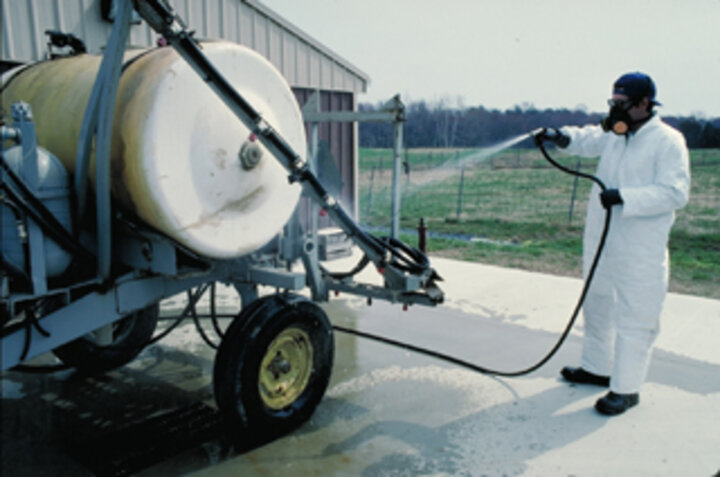What, if anything, should be done with herbicides, insecticides and fungicides left over from the summer growing season? If pesticides freeze, will they still be good next year?
The first rule of thumb is to check the product label for storage recommendations and any warnings against freezing, said Clyde Ogg, pesticide safety education coordinator at the University of Nebraska-Lincoln. Most liquid pesticides may be safely stored between 40°F and 100°F.
If a liquid pesticide does freeze, it may be less effective. Apply a degraded pesticide next year, Ogg said, and you have just wasted your time.
Pesticides contain active and inactive ingredients. The active ingredient is what kills the pest. Inactive ingredients include solvents, carriers, or emulsifiers that make the pesticide more efficient.
Due to the inclusion of these hydrocarbon solvents or inert ingredients, the freezing point of many liquid pesticides is lower than 32°F, notes a University of Missouri Extension publication, Temperature Effects on Storage of Agricultural Pesticides. When a liquid pesticide freezes, the active ingredients can separate from the solvents or emulsifiers, causing the emulsifiers to become inactive, crystalize, and coagulate, breaking down the original product.
If frozen, some pesticides can be thawed naturally at room temperature, but never with a flame or heat. Make sure the container has not cracked. After thawing, roll and shake the container to resuspend the contents.
If crystals are still present after thawing, the pesticide should not be used as it will be ineffective. Rather, properly dispose of it according to label directions.
Generally, wettable powders and granules aren’t affected by low temperatures. Moisture, though, can cause caking that may reduce effectiveness. Products formulated in water-soluble packets should not be frozen as they will become brittle and break open.
When storing pesticides, Ogg recommends:
- Don’t store pesticides near heat, sparks, or open flames
- Avoid contaminating other pesticides, water, feed, or fertilizer.
- Keep containers tightly closed in a cool, locked, well-ventilated place away from children and pets.
- Store in original containers only.
- If storage information cannot be found on the label, contact the pesticide manufacturer.

Storing Away your Sprayer for the Winter
To keep your sprayer in good condition, follow these suggestions for sprayer storage from the Nebraska Extension publication, Cleaning Pesticide Application Equipment (G1770).
- Wear personal protective equipment.
- Before storing the liquid sprayer for winter, ensure it is completely empty and clean. As much as 15 gallons of product can remain in the tank after it's been emptied, due to the volume in the lines and filters.
- When storing, add one, and up to five, gallons of lightweight oil such as diesel fuel or kerosene before final flushing. This applies a protective coating on the inside of the tank, pump, and plumbing.
- Store in a clean, dry building. If the sprayer must be stored outdoors, remove hoses and store these inside where they will be protected from ultraviolet light.
- For sprayer trailers, put blocks under the frame or axle to prevent flat spots on tires during storage.
